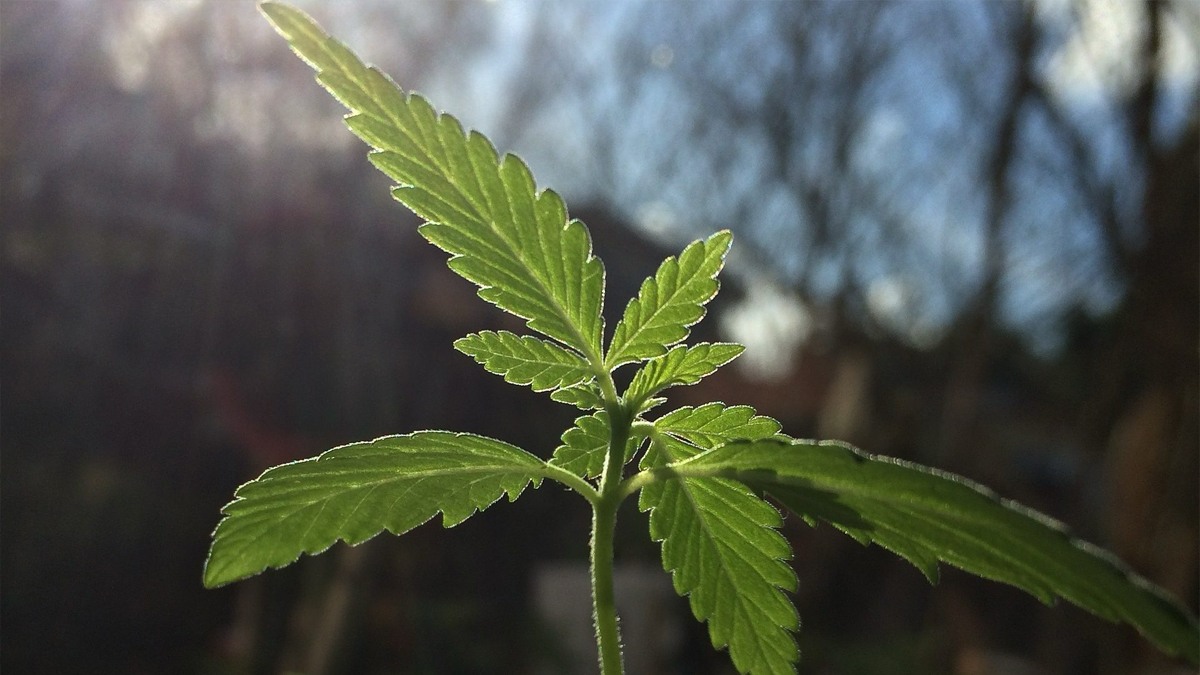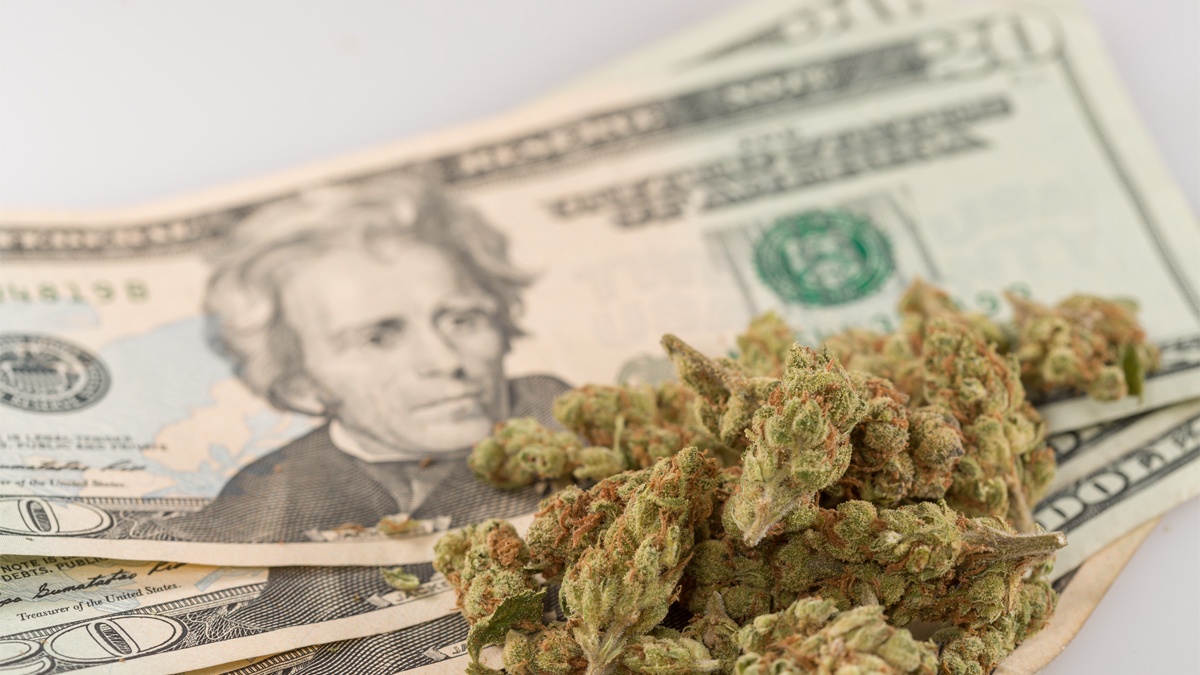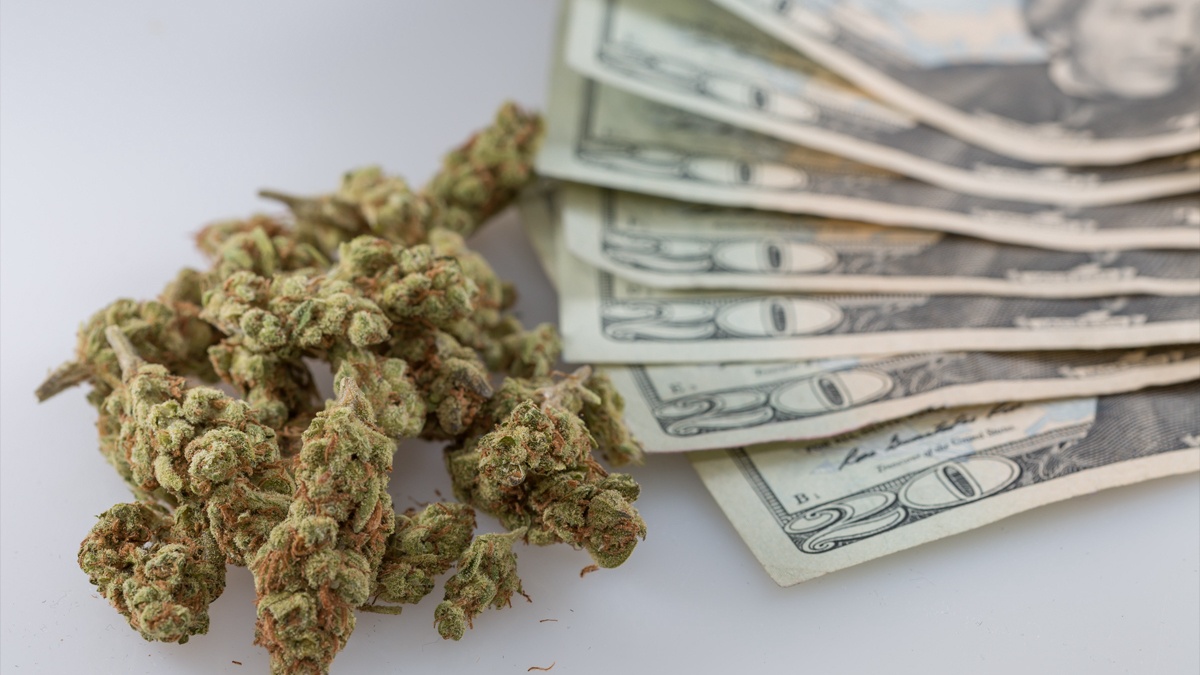
Newly published research on marijuana cultivation finds that growing plants outside can drastically reduce environmental impacts compared to indoor production—lessening greenhouse gas emissions, soil acidification and the pollution of local waterways.
“Results show that outdoor cannabis agriculture can be 50 times less carbon-emitting than indoor production,” says the study, published last month by the journal Agricultural Science and Technology. “Dissemination of this knowledge is of utmost importance for producers, consumers, and government officials in nations that have either legalized or will legalize cannabis production.”
Aims of the study were twofold, wrote the authors, from McGill University in Canada and the University of Michigan in Anne Arbor. First, they wanted to identify what fertilizers would maximize marijuana flower yields and THC production while reducing necessary inputs. Second, they sought “to quantify how this shifts greenhouse gas emissions, resource depletion (fossil and metal), terrestrial acidification, and the eutrophication potential of outdoor cannabis production.”
They noted that while a handful of studies have examined indoor marijuana production, “very little is known about the impact of outdoor cannabis agriculture.”
“The rapid expansion of legal Cannabis sativa (cannabis) production raises questions regarding its resource use and environmental impacts,” the study says. “These impacts are critically understudied, as research to date has prioritized the medicinal aspects of cannabis.”
Medical and food-related cannabis study accounts for about half of research, it says, “while cannabis cultivation accounts for less than 1% of studies.”
The study involved a so-called life-cycle assessment (LCA) of the environmental impacts of plants grown in Quebec over three growing seasons. “Inputs of equipment and supplies at the farm were tracked,” it explains. “LCA was then used to quantify environmental impacts for the five indicators: GWP [global warming potential], marine and freshwater eutrophication potential (MFEP), terrestrial acidification (TA), fossil fuel depletion (FD), and metal resource depletion (MD).
Researchers grew the strain Candy Cane, noting there was a risk of crop failure due to an early frost, and the varietal “stood out as the fastest-maturing genotype,” they said.
The study also examined marijuana impacts and harvests of different fertilizer treatments.
“In addition to providing the first full LCA of outdoor cannabis production,” authors wrote, “our study also brings novelty by quantifying impacts on both a yield basis and a THC basis. Previous studies have only focused on impacts per kilogram (kg) of dried flower. This ignores the potential impacts of production practices on the concentration of cannabinoids in the dried flower, thereby undermining the functional equivalence of the systems being compared, as it is ultimately these chemicals, not the dried flower, that are of value to both medicinal and recreational growers.”
Though the research examined outdoor cultivation, it nevertheless studied plants grown in potting media, primarily peat moss. That decision was made “to control the nutrient content across the years” and better study the effects of different fertilizers, the study says. Nevertheless, researchers noted that potting media “contributed between 65 and 75% of the GWP impacts in both treatments.”
“This study aligns with others showing how the environmental burden of outdoor production in pots or raised beds is driven by potting media,” they wrote. “Enabling on-site potting media reuse instead of acquiring fresh potting media every growth cycle can reduce these impacts.”
Transportation burdens were largely to blame when using new media, though environmental costs were also associated with things like perlite production, the study says. The most greenhouse gas emitting process in reusing media, meanwhile, “was steam sterilization via diesel combustion in agricultural machinery.”
Impacts beyond greenhouse gas production included fossil fuel depletion, terrestrial acidification and eutrophication—or pollution of waterways with organic material, predominantly fertilizer—among others.
The study says its findings are “paramount for stakeholders, including producers, consumers, and policymakers in nations with existing or forthcoming legalization frameworks” and can help facilitate “informed decision-making to mitigate environmental impacts while supporting sustainable cannabis production practices.”
As for its findings on fertilizers, researchers said in an email to Marijuana Moment that one of the study’s “most intriguing discoveries” was that a particular low-nitrogen, high-potassium formulation, termed L+, “resulted in a remarkable 30% increase in Total THC, yielding 15% THC compared to the standard 10% THC seen with other treatments.”
“This phenomenon aligns with existing literature suggesting that nitrogen deficiency can trigger cannabinoid synthesis,” explained Vincent Desaulniers Brousseau, a doctoral candidate at McGill University. “What makes our findings novel is the role of potassium in enabling low-nitrogen stressed plants to produce significantly more THC. Notably, treatments with low nitrogen and low potassium did not exhibit similarly high THC levels.”
Not only did the L+ fertilizer formulation best encourage THC production in plants, it also “exhibited the lowest carbon footprint associated with fertilizers,” Desaulniers Brousseau added. “This suggests that on farms transitioning away from peat, cultivation with low nitrogen and high potassium fertilizers could potentially offer a greener alternative to traditional high nitrogen approaches, largely due to the significant carbon footprint of nitrogen fertilizer production and use.”
“These findings not only advance our understanding of optimizing cannabis cultivation for THC content and environmental sustainability,” he continued, “but also challenge conventional metrics in assessing cannabis product value and environmental impact.”
Though the environmental impacts of cannabis production are often overlooked by policymakers, industry and consumers alike, some bodies have stepped up efforts to lessen the footprint of cultivation.
In Colorado last year, for example, officials launched a program to fund the cannabis industry’s energy efficiency, pointing to a 2018 report from the state’s energy office finding that cannabis cultivation comprised 2 percent of the state’s total energy use. Electricity was pricey for growers too, the report found, eating up roughly a third of cultivators’ operating budgets.
In 2020, Colorado launched a more experimental program aimed at using cannabis cultivation to capture carbon from another regulated industry: alcohol. The state Carbon Dioxide Reuse Program Pilot Project involved capturing carbon dioxide emitted during beer brewing and using the gas to stimulate marijuana growth.
A report from the International Coalition on Drug Policy Reform and Environmental Justice last year, meanwhile, drew attention to the negative impacts of unregulated drug production in areas like the Amazon Rainforest and the jungles of Southeast Asia.
Attempts to protect those critical ecosystems, the report warned, “will fail as long as those committed to environmental protection neglect to recognize, and grapple with, the elephant in the room”—namely “the global system of criminalized drug prohibition, popularly known as the ‘war on drugs.’”
Two years ago, meanwhile, a pair of U.S. congressmen who oppose legalization pushed the Biden administration to study the environmental impacts of marijuana cultivation, writing that they had “reservations regarding marijuana cultivation’s subsequent emissions and believe more research is needed on this industry’s rapidly growing demands on our country’s energy systems, along with its effects on our environment.”
In an interview with Marijuana Moment at the time, pro-legalization Rep. Jared Huffman (D-CA) said that “there are some important nuances” when it comes to cannabis policy and the environment.
He said that, even amid extreme drought conditions in California, there are water sources that should be providing resources to the community and industry that are instead being diverted by illicit growers.
“We have not done a very good job of lifting up the legal market so that we can eliminate the black market—and that black market has really unacceptable environmental impacts,” he said at the time.
California itself has taken some specific steps to ameliorate the issue. For example, officials announced in 2021 that they were soliciting concept proposals for a marijuana tax-funded program aimed at helping small cannabis cultivators with environmental clean-up and restoration efforts.
The following year, California awarded $1.7 in grant money to sustainable cannabis growers, part of a planned $6 million in total funding.
And in New York, set rules meant to promote environmental awareness, for example by requiring businesses to submit an environmental sustainability program and explore the possibility of reusing cannabis packaging. Lawmakers there also explored promoting industry recycling programs and cannabis packaging made from hemp rather than synthetic plastics, though neither proposal was enacted.
Keep out of reach of children. For use only by adults 21 years of age and older.












